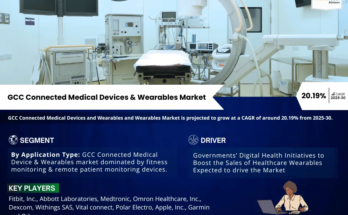Similar in functionality of the traditional Implantable Cardioverter Defibrillators (ICD), and the Transvenous Implantable Cardioverter Defibrillators (T-ICD), Subcutaneous Implantable Cardioverter Defibrillators (S-ICD’s), are used to treat patients with a history of life threatening Arrhythmias (ventricular tachycardia or fibrillation). Unlike the conventional Implantable Defibrillators which are implanted intravascular, the Subcutaneous Implantable Defibrillators are inserted subcutaneously under the skin, and uses a subcutaneous electrode placed near the heart, rather than into the heart as in case of conventional Implantable Defibrillators.
A Subcutaneous Implantable Defibrillator consists of a small titanium case which contains battery, a subcutaneous electrode, and accessories such as insertion tool etc. If there is any abnormality in the patient’s heartbeat, the subcutaneous implantable defibrillator sends and electrical impulse to restore normalcy in the heart rhythm, followed by pacing therapy in form of post shock bradycardia, if needed. Implantable defibrillators are useful in saving patients’ lives with known history of ventricular tachycardia and arrhythmias.
Ask for the soft copy of the Brochure: https://www.futuremarketinsights.com/reports/brochure/rep-gb-2436
The US-FDA recently approved the use of subcutaneous implantable defibrillators in 2012, following proven efficiency after clinical studies. According to a study published in the New England Journal of Medicine (2010), demonstrated a concept of the subcutaneous implantable defibrillators. Any person with a history of a congenital heart disease, heart attack, sudden cardiac arrest, or ventricular arrhythmia, may need a subcutaneous implantable defibrillator.
Subcutaneous Implantable Defibrillator Market: Drivers and Restraints
The global market for Subcutaneous Implantable Defibrillator Market is expected to be driven by the key advantages of the subcutaneous implantable defibrillators over the conventional Implantable defibrillators, such as the placement of electrode near the heart, rather than on the heart in case of conventional defibrillators which reduces risks, and longer shelf life, and ease of insertion and removal of the subcutaneous defibrillators. Also Increasing incidences of cardiovascular diseases, increasing geriatric population around the world, changing lifestyle, increased smoking, rising prevalence of strokes, and increasing technological advancements in the medical devices industry are some of the factors responsible for the growth of the subcutaneous implantable defibrillators market during the forecast period of 2016-2024. However patients with a history of symptomatic ventricular bradycardia, or patients with a heart failure for whom resynchronization is advised, cannot use subcutaneous implantable defibrillators as the device provides a post-shock pacing therapy whenever needed, and this can lead to complications in patients with bradycardia. Another restraint for the growth of the subcutaneous implantable defibrillators market is that the clinical efficiency of the subcutaneous implantable defibrillators in general population is still not proved.
Subcutaneous Implantable Defibrillator Market: Overview
Ventricular Tachycardia in the indications segment is expected to dominate the global subcutaneous implantable defibrillators market during the forecast period, due to changing lifestyles leading to increasing cases of cardiac disorders, and increased smoking prevalence. In the end users segment, hospitals is expected to dominate the global subcutaneous implantable defibrillators market, due to increasing cardiac surgeries, improving hospitals infrastructure and increased adoption of sophisticated and advanced technologies by hospitals.
Subcutaneous Implantable Defibrillator Market: Regional Overview
Region wise, the global subcutaneous implantable defibrillator market is classified into regions namely, North America, Latin America, Western Europe, Eastern Europe, Asia-Pacific, Japan, Middle East and Africa. North America dominated the global market for implantable defibrillators, due to good reimbursement policies for surgical procedures, US-FDA approval and increased demand for subcutaneous implantable defibrillators. Increasing incidences of cardiovascular diseases owing to changing lifestyle and increasing geriatric population in the Asia Pacific region is expected to boost the market growth in APEJ region.
Subcutaneous Implantable Defibrillator Market: Key Players
Some of the key players in global Implantable Defibrillator market include Boston Scientific Corporation, LivaNova PLC Company, Imricor Medical Systems, Inc., MicroPort Scientific Corporation, Mayo Clinic US, Medtronic plc, MRI Interventions, Inc., and St. Jude Medical, Inc.
The report covers exhaustive analysis on:
- Market Segments
- Market Dynamics
- Market Size
- Supply & Demand
- Current Trends/Issues/Challenges
- Competition & Companies involved
- Technology
- Value Chain
Regional analysis includes
- North America (U.S., Canada)
- Latin America (Mexico, Brazil)
- Western Europe (Germany, Italy, U.K, Spain, France, Nordic countries, BENELUX)
- Eastern Europe (Russia, Poland, Rest Of Eastern Europe)
- Asia Pacific Excluding Japan (China, India, ASEAN, Australia & New Zealand)
- Japan
- Middle East and Africa (GCC, S. Africa, N. Africa, Rest Of MEA)
The report is a compilation of first-hand information, qualitative and quantitative assessment by industry analysts, inputs from industry experts and industry participants across the value chain. The report provides in-depth analysis of parent market trends, macro-economic indicators and governing factors along with market attractiveness as per segments. The report also maps the qualitative impact of various market factors on market segments and geographies.
Subcutaneous Implantable Defibrillator Market: Segmentation
The global Implantable Defibrillator market is classified on the basis of product type, procedure type, end user, and geography.
Based on indications, the global Subcutaneous Implantable Defibrillator market is segmented into the following:
- Ventricular Tachycardia
- Hypertrophic Cardiomyopathy
- Ventricular Dysplasia
- Others
Based on end user, the global Implantable Defibrillator market is segmented into the following:
- Hospitals
- Specialty Clinics
- Ambulatory Surgical Centers
- Home care settings
Ask for the soft copy of the TOC of this Report: https://www.futuremarketinsights.com/toc/rep-gb-2436
Report Highlights:
- Detailed overview of parent market
- Changing market dynamics in the industry
- In-depth market segmentation
- Historical, current and projected market size in terms of volume and value
- Recent industry trends and developments
- Competitive landscape
- Strategies of key players and products offered
- Potential and niche segments, geographical regions exhibiting promising growth
- A neutral perspective on market performance
- Must-have information for market players to sustain and enhance their market footprint
About Future Market Insights (FMI)
Future Market Insights (FMI) is a leading provider of market intelligence and consulting services, serving clients in over 150 countries. FMI is headquartered in Dubai, and has delivery centers in the UK, U.S. and India. FMI’s latest market research reports and industry analysis help businesses navigate challenges and make critical decisions with confidence and clarity amidst breakneck competition. Our customized and syndicated market research reports deliver actionable insights that drive sustainable growth. A team of expert-led analysts at FMI continuously tracks emerging trends and events in a broad range of industries to ensure that our clients prepare for the evolving needs of their consumers.
Contact Us:
Future Market Insights
Unit No: AU-01-H Gold Tower (AU), Plot No: JLT-PH1-I3A,
Jumeirah Lakes Towers, Dubai,
United Arab Emirates
For Sales Enquiries: [email protected]
For Media Enquiries: [email protected]
Website: https://www.futuremarketinsights.com


